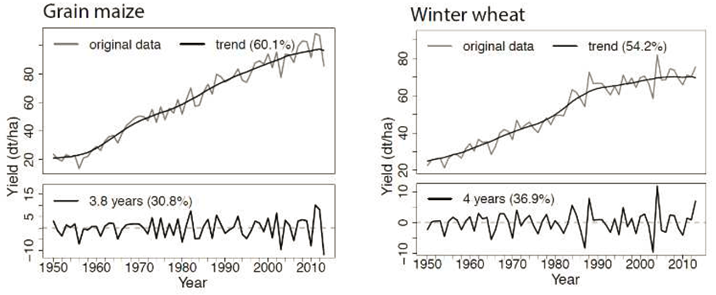|
|
Motivation
Facing a growing world population, with an estimated 9.7 billion people by 2050, the global demand for energy, materials and food will continue to grow, increasing the pressure on available resources. The use of fossil fuels and their negative impact on the climate through an elevated atmospheric CO2 level calls for a bio-economy that is based on agricultural production of renewable resources. However, increasing crop yields, with doubled production of cereals during the second half of the twentieth century, have been connected to severe environmental problems and losses of ecosystem functions, not least through intensive inorganic fertilizer application. Therefore, future bio-economy must address the sustainable use of resources.
Over the past 50 years, breeding programs primarily focused on increasing yield and disease resistance. Crops were selected under optimal water and nutrient supply with little adaptation to erratic weather conditions such as drought or heavy rainfall. In this way, traits that performed best under uniform (in space) and constant (in time) resource supply were selected. This has likely caused a loss of genes associated with adaptations for efficient water and nutrient acquisition under low water availability or efficient nutrient retention in the rhizosphere after heavy rainfall events. Consequently, breeding for highly productive species with little investments in roots may have reduced the resistance and resilience of yields in our agroecosystems.
Stagnation of increasing yields of agricultural crops is observed worldwide. In Western Europe stagnation has been explained, not only by the reduced input of pesticides and fertilizer, but also by climate change. Data from Bavaria for winter wheat and grain maize show that along with the stagnation of yield growth, the variability of yield significantly increased since the 1990s (Fig. 1).
|
Figure 1: Time series analysis for yield of grain maize (left) and winter wheat (right) (modified after Weigel, 2015). Singular Spectrum Analysis SSA identifies trends (top panel) and short-term variability (bottom panel). |
We propose that landraces have a higher capacity to buffer the strong variability in yield by expressing a higher plasticity of rhizosphere traits under extreme climatic events.


